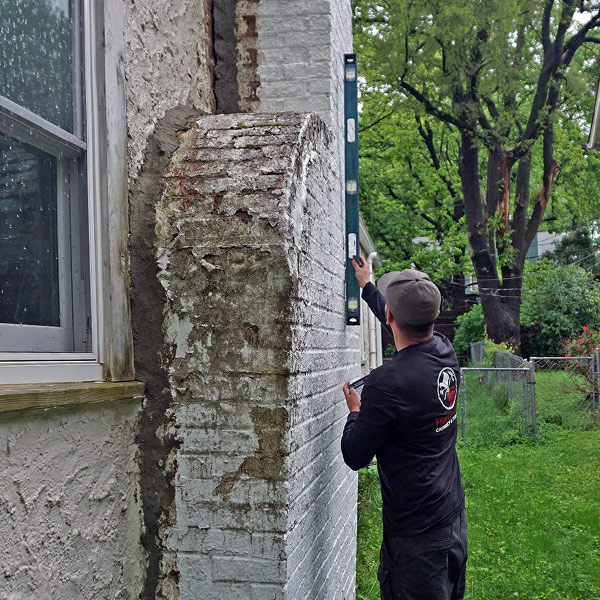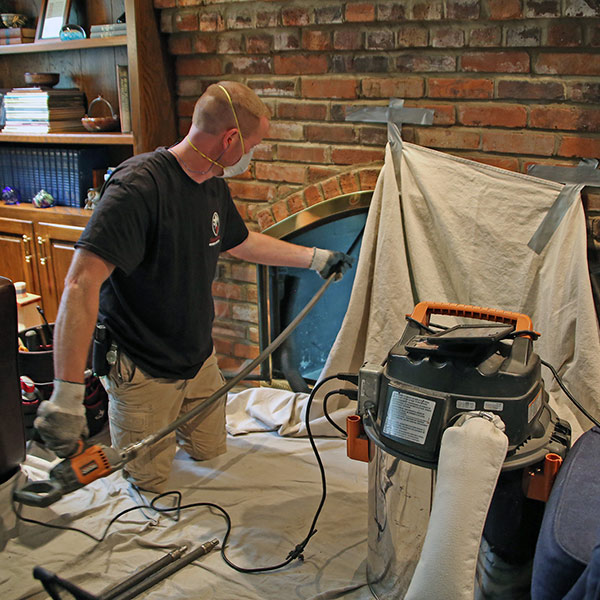Ways to avoid chimney repair scams

Peace of mind comes from finding peace at home, and one of the best ways to ensure this is finding trustworthy service providers to keep your home running smoothly. But sometimes, it can be difficult determining just what to look for when choosing a source or contractor for homes services. When dealing with your fireplace and chimney, your homes’ safety is also at hand. Don’t be scammed by disreputable providers begging for your business – keep on the lookout for these warning signs.
AVOID DOOR-TO-DOOR OFFERS AND UNSOLICITED PHONE CALLS
This is a prevalent scam tactic in many areas, where potential hustlers will canvass specific areas and neighborhoods, either on-foot or over the phone. Generally, they will provide special, immediate pricing deals, or present a catastrophic condition that needs an immediate, costly repair to your chimney.
Don’t hire these contractors, and certainly don’t provide them with a potential deposit for work, until you have secured their official business name and verified their legitimacy through a third-party source, such as Angie’s List or the Better Business Bureau.
LOOK FOR THE CERTIFICATION
Similar to many other trades, professional chimney sweeps and technicians can gain accreditation and certification — in this case, through the CSIA (Chimney Safety Institute of America). Earning certification through the CSIA ensures t the business you are working has met the CSIA’s national safety standards, as well as abides by their established Code of Ethics. This is re-enforced by the CSIA’s non-profit status, meaning the institute does not issue certifications for direct payments, but rather, requires rigorous education and testing to earn a certification.
If a contractor does not have certification with the CSIA, proceed with caution.
BE WARY OF HIGH-STAKES SALES TACTICS
If a contractor is pressuring you into completing work immediately, consider pumping the breaks. Scare tactics and high-pressure sales techniques are generally avoided by professionals who have your best interests in mind. Much like a medical diagnosis, consider getting a second opinion from another reputable business before moving forward with repairs.
CHECK THE REFERENCES
Similar to the above, ensure the company does not have any outstanding complaints lodged against them with professional oversight groups, such as the BBB. Additionally, word of mouth still holds a high amount of clout in today’s business world. If you have a trusted friend, co-worker, family member, or neighbor who has worked with the company before, get their opinion.
KNOWLEDGE IS POWER
There are a number of research tools available to consumers today. Conducting a thorough search online for company details is invaluable before committing to hiring one company over another. If you feel like a company is sending out the wrong message for whatever reason — you’ve never heard of the business name before, the contractors appear without uniforms or branded vehicles, or if they’re being overly pushy about beginning work — cross-reference their name in an online search. If you’re unable to find a reputable resource listing their name, their contact information, and their licensing information, be wary about allowing them into your home.
It you are looking for a trusted, certified, professional chimney service provide to conduct an annual chimney cleaning, safety inspection or make repairs, Lindemann Chimney & Fireplace | Heating & Cooling is a premiere provider on Chicago’s Northshore. Schedule your appointment today!
 A wood-burning fireplace isn’t always the best option for homeowners. For some, a gas fireplace is a far better choice. But what if your Chicago home already has a wood fireplace installed? Is a gas fireplace conversion possible?
A wood-burning fireplace isn’t always the best option for homeowners. For some, a gas fireplace is a far better choice. But what if your Chicago home already has a wood fireplace installed? Is a gas fireplace conversion possible?
 Fire Hazards
Fire Hazards Masonry Destruction
Masonry Destruction
 Whether the seller or you as the buyer arranges it, the chimney must be inspected. In fact, in most jurisdictions, it is the law. The inspection should be done by a CSIA-certified (Chimney Safety Institute of America) technician, not a common home inspector.
Whether the seller or you as the buyer arranges it, the chimney must be inspected. In fact, in most jurisdictions, it is the law. The inspection should be done by a CSIA-certified (Chimney Safety Institute of America) technician, not a common home inspector. A poorly drafting chimney can make fires hard to start and maintain. It also can send smoke back into the house. Carbon monoxide, which is present in varying amounts in combustion smoke, can be fatal to humans and pets. Certified chimney sweeps have the tools and equipment to clean your chimney thoroughly and prevent excess creosote and air-flow problems.
A poorly drafting chimney can make fires hard to start and maintain. It also can send smoke back into the house. Carbon monoxide, which is present in varying amounts in combustion smoke, can be fatal to humans and pets. Certified chimney sweeps have the tools and equipment to clean your chimney thoroughly and prevent excess creosote and air-flow problems. Placement
Placement The purpose of a chimney, of course, is to accommodate combustion fumes as they rise up and out of the home. If the chimney is the wrong height, however, the draft can be negatively affected. The chimney top clearance formula is simple. The chimney peak should extend 2 feet higher than anything within 10 horizontal feet.
The purpose of a chimney, of course, is to accommodate combustion fumes as they rise up and out of the home. If the chimney is the wrong height, however, the draft can be negatively affected. The chimney top clearance formula is simple. The chimney peak should extend 2 feet higher than anything within 10 horizontal feet. ASH DUMP
ASH DUMP CHIMNEY CROWN
CHIMNEY CROWN FLUE
FLUE Creosote
Creosote Masonry damage
Masonry damage